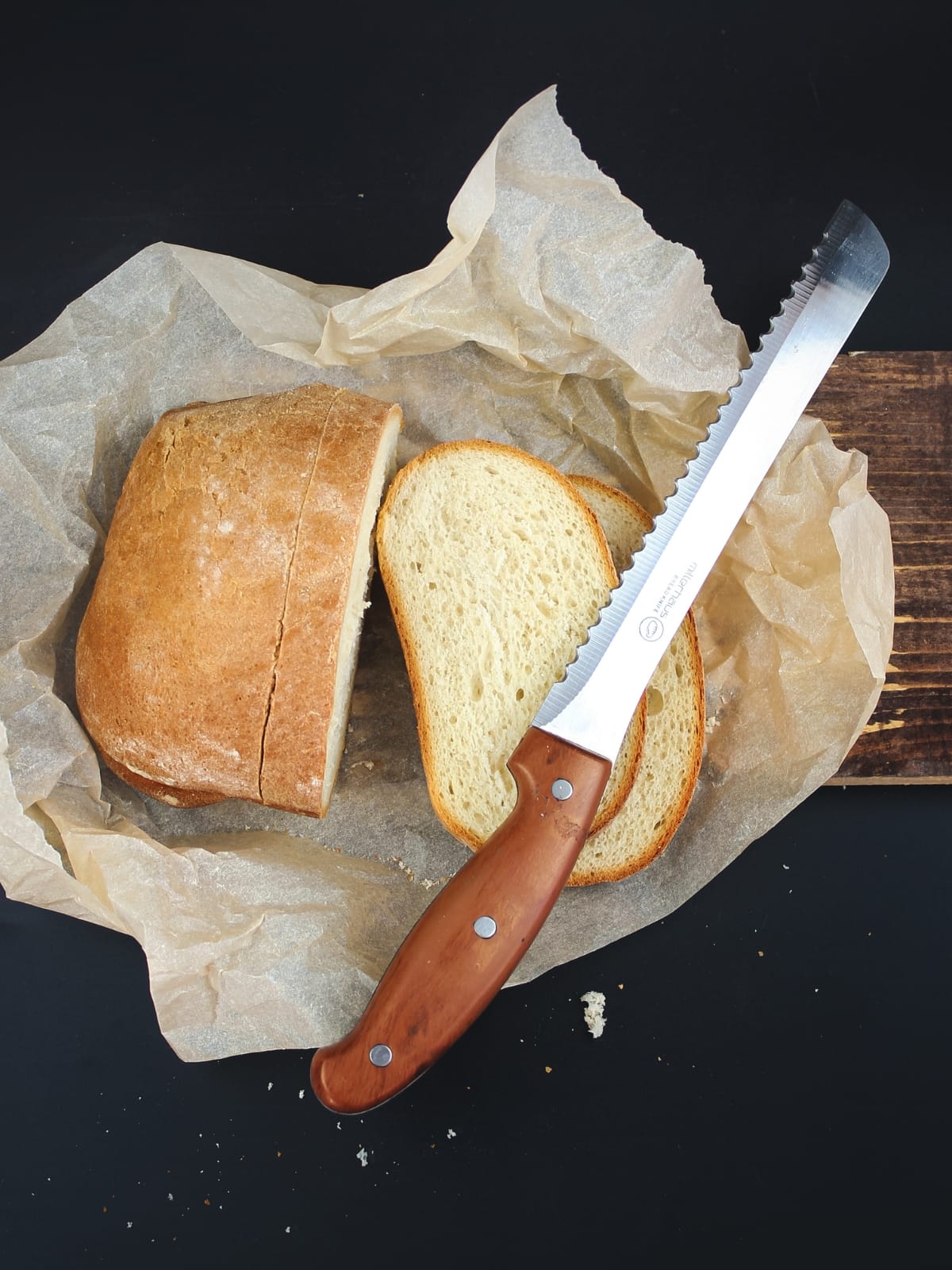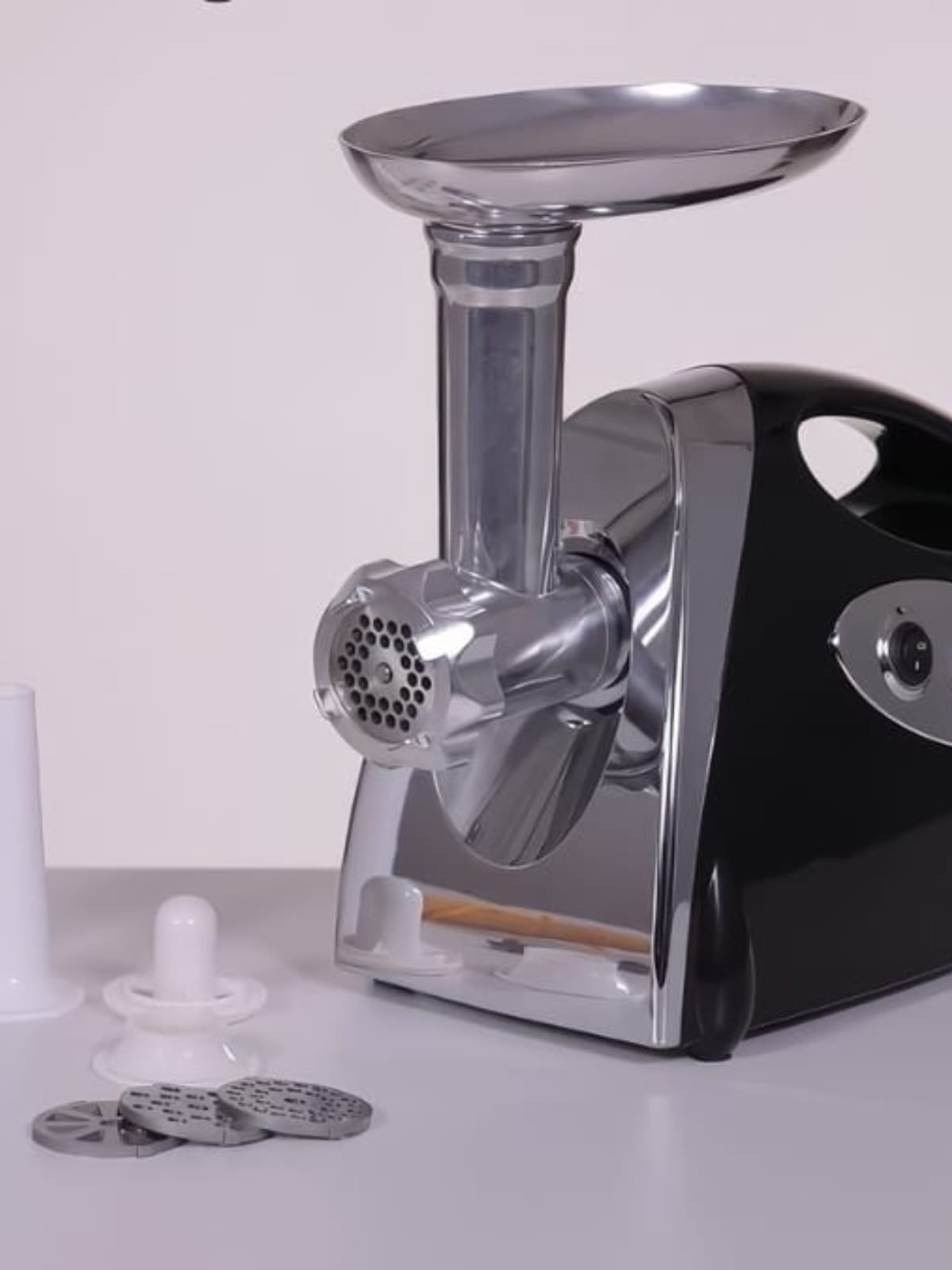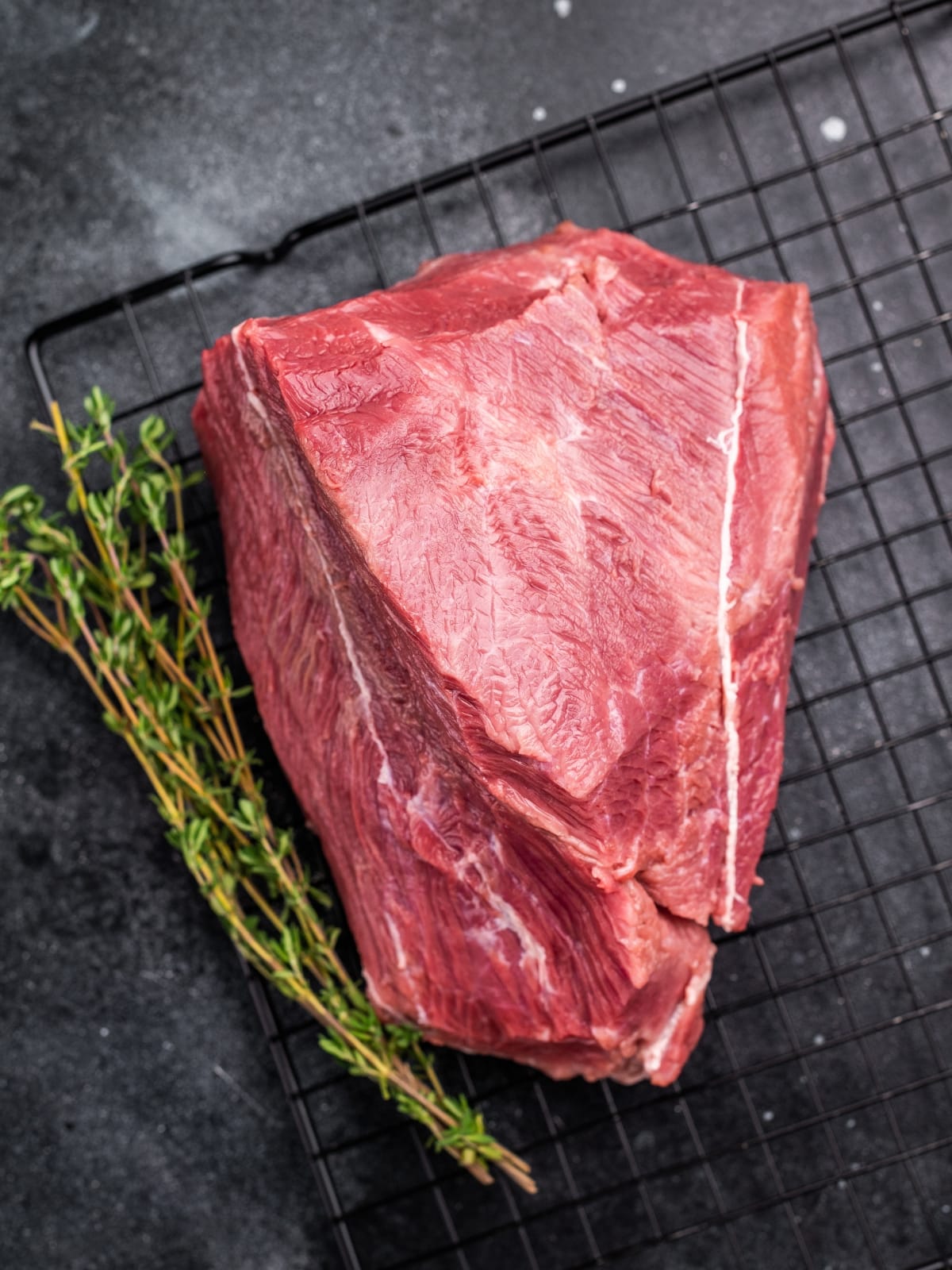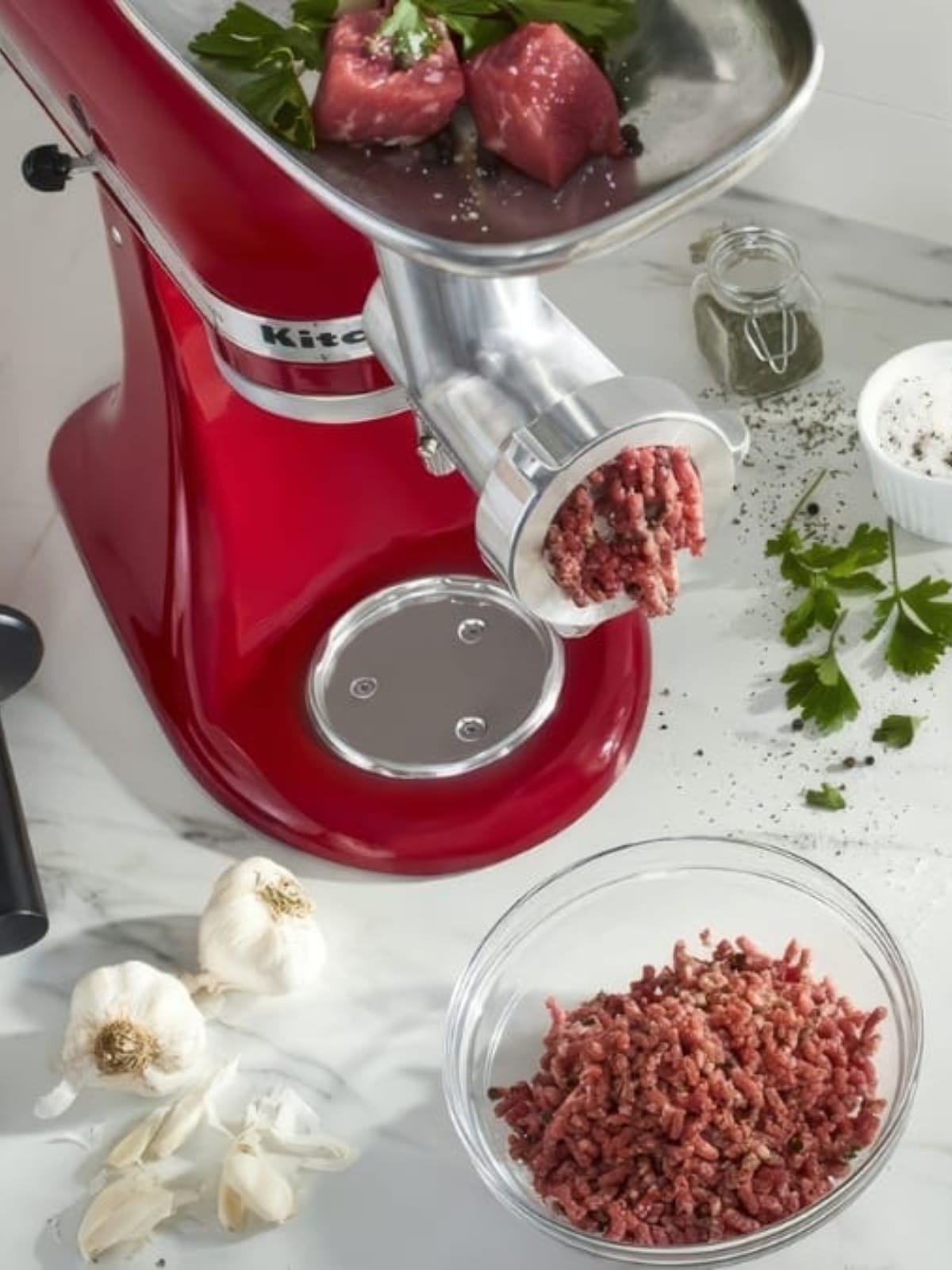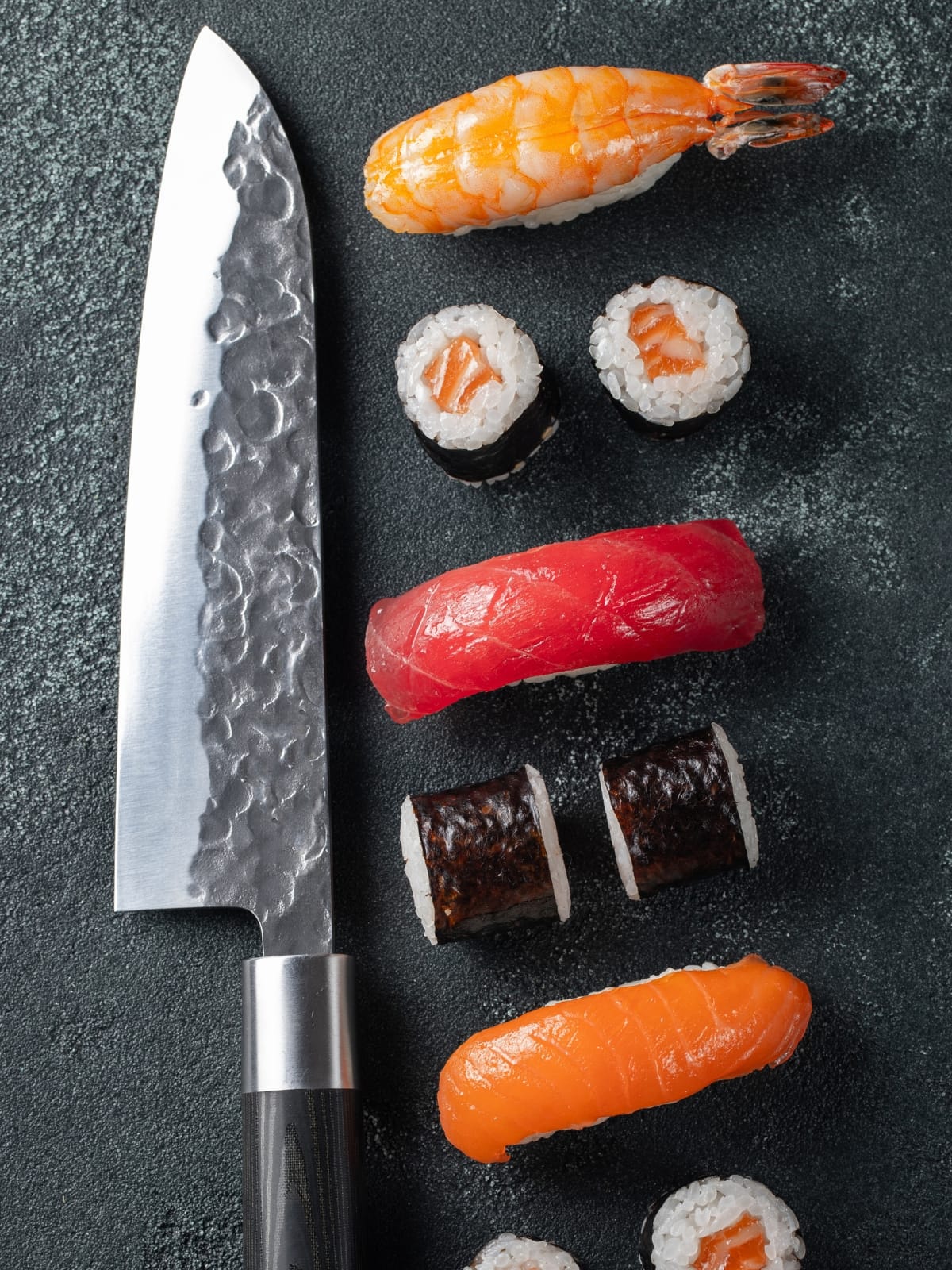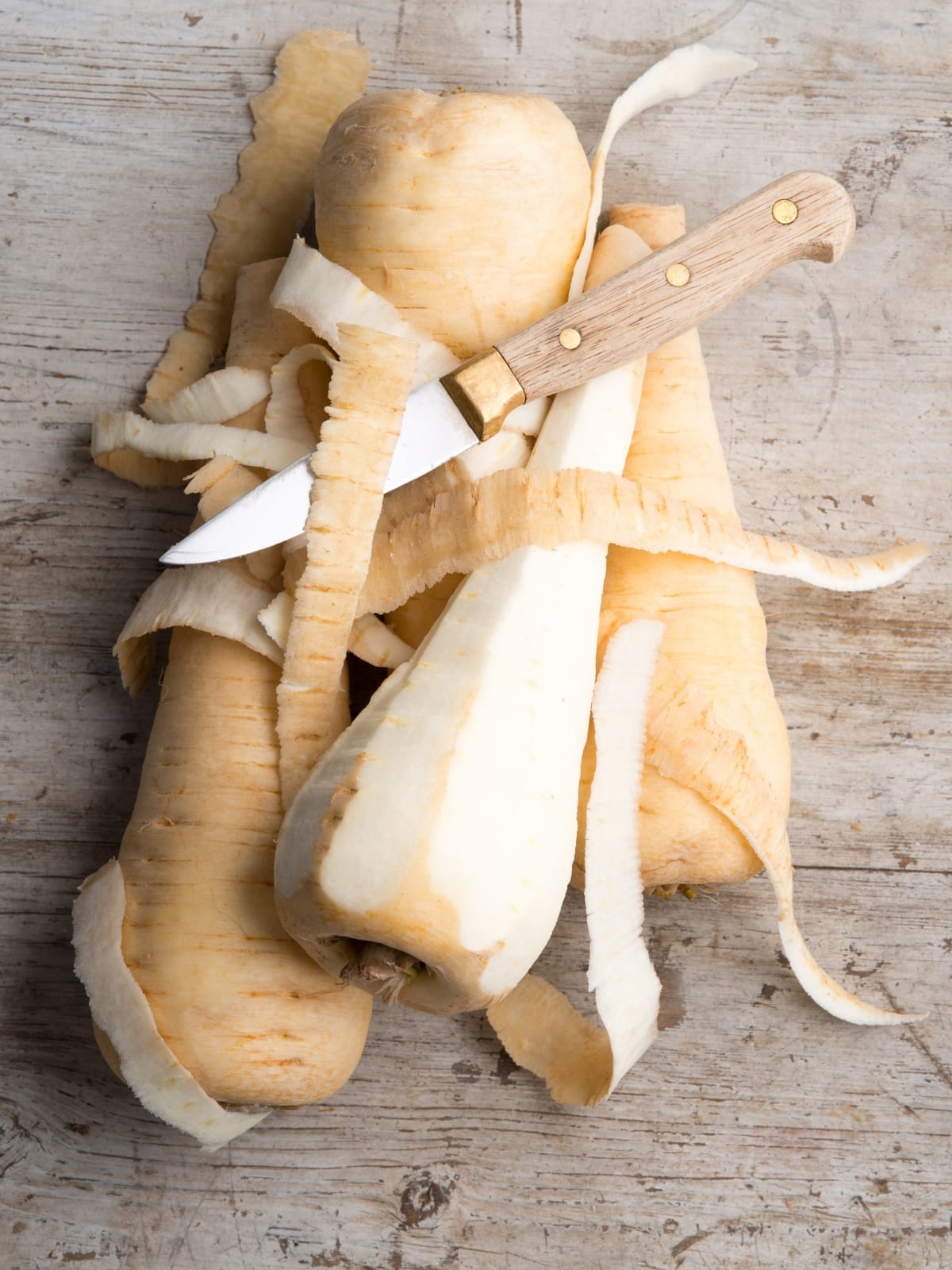Discover everything you need to know about bread knives – from their distinctive serrated blade design to practical uses beyond just slicing bread. This comprehensive guide explores why this versatile kitchen tool is essential for both home cooks and professional chefs, helping you make informed decisions about choosing and using the perfect bread knife.
Essential Features and Functions
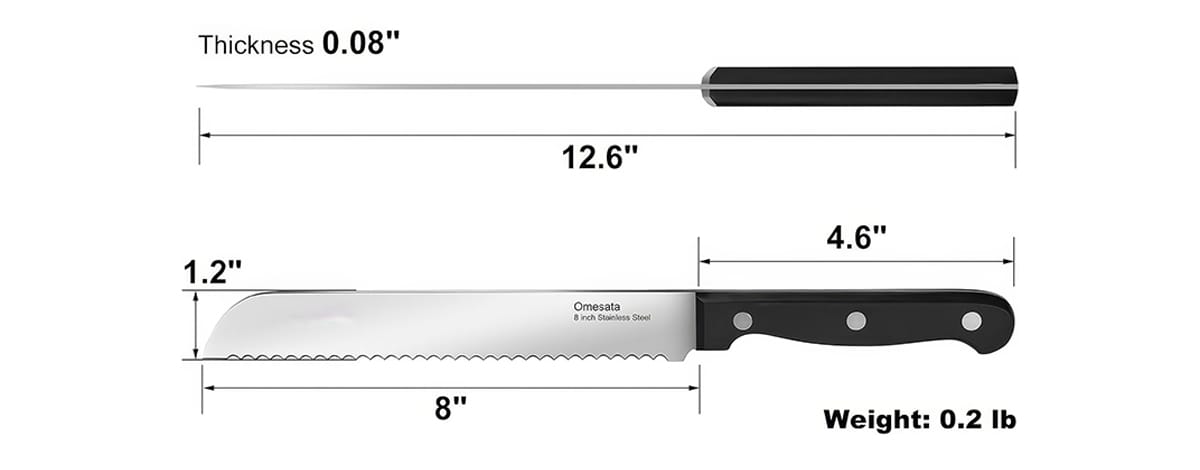
A bread knife is a specialized kitchen tool designed primarily for slicing bread and other baked goods. Its most distinctive feature is the long, serrated blade that sets it apart from other kitchen knives. But what exactly makes a bread knife unique, and why is it considered an essential tool in both home and professional kitchens?
Key characteristics that define a bread knife include:
- Serrated Edge: The blade features a series of sharp, tooth-like serrations that allow it to grip and cut through crusty exteriors without compressing the soft interiors of bread.
- Long Blade: Typically ranging from 7 to 10 inches, the long blade allows for smooth, sawing motions to cut through large loaves.
- Thin Profile: The blade is usually thinner than other kitchen knives, reducing friction and allowing for cleaner cuts.
- Pointed Tip: Many bread knives have a slightly pointed tip, which can be useful for starting cuts in tough crusts.
These features combine to make the bread knife an indispensable tool for anyone who regularly enjoys artisanal breads, soft sandwich loaves, or delicate pastries.
The Anatomy of a Bread Knife
To truly understand what a bread knife is, it’s essential to examine its components in detail.
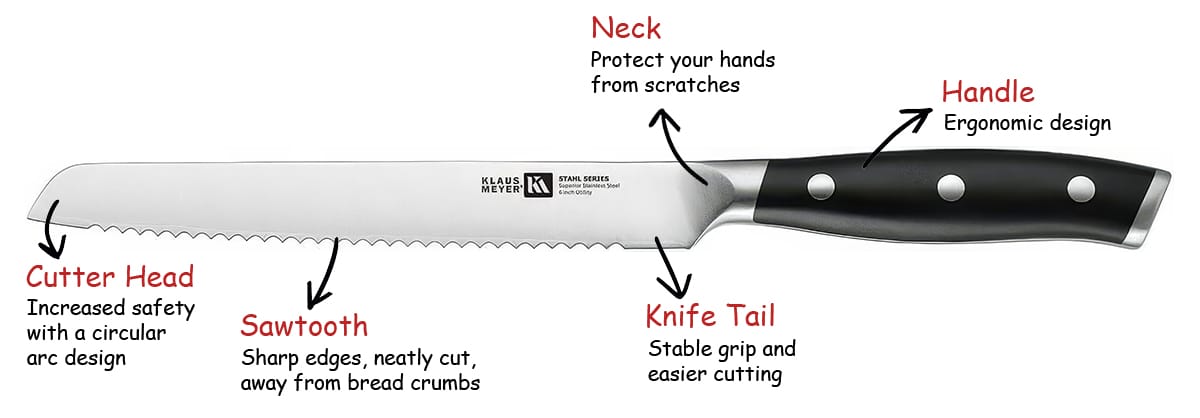
The blade is the most crucial part of a bread knife. It’s typically made of high-carbon stainless steel, which offers a good balance of sharpness, durability, and rust resistance. The serrations along the edge can vary in design:
- Pointed Serrations: These are the most common, featuring a series of sharp, pointed teeth that excel at gripping and cutting through tough crusts.
- Wavy Serrations: Some knives have a more undulating edge, which can be gentler on softer breads and produce cleaner slices.
- Micro-Serrations: These are very fine, closely spaced serrations that can offer precise cuts on delicate items like pastries.
Bread knives typically range from 7 to 10 inches in length. Here’s a quick guide:
| Length | Best For |
|---|---|
| 7-8 inches | Smaller loaves, precision cuts |
| 9-10 inches | Large artisanal loaves, versatile use |
| 10+ inches | Professional kitchens, very large loaves |
What Makes Bread Knives Different from Other Kitchen Knives?
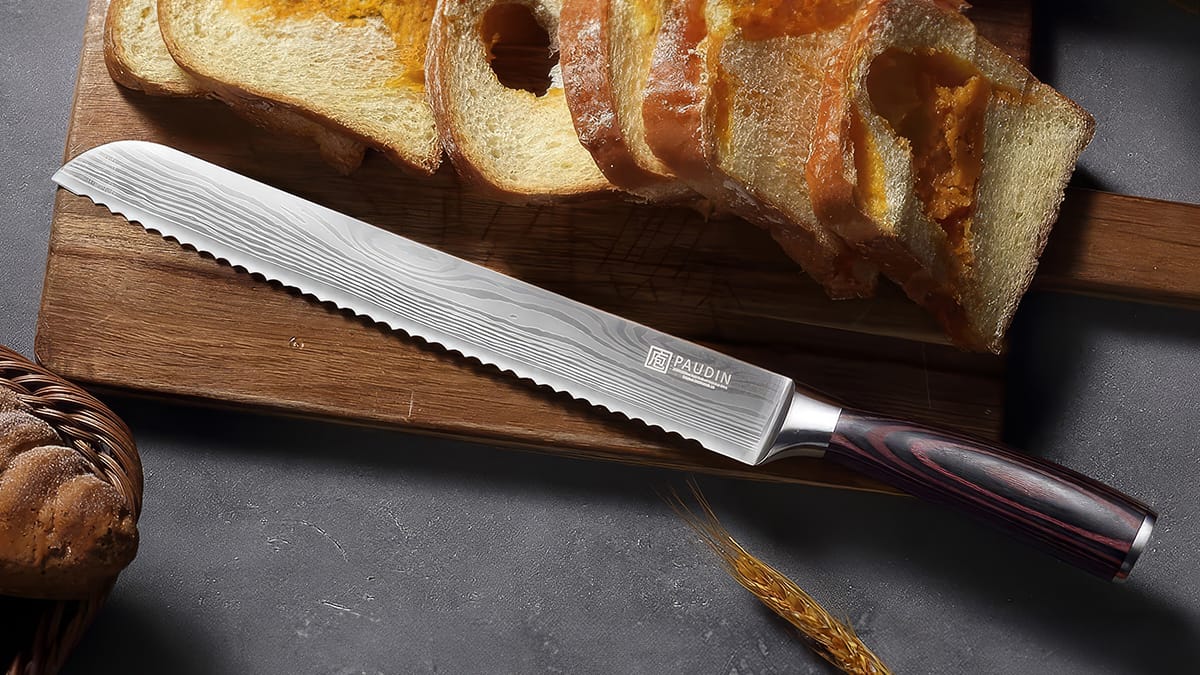
The key difference between a bread knife and other kitchen knives lies in its serrated edge. While straight-edged knives rely on downward pressure to slice through food, serrated knives use a sawing motion. This unique cutting mechanism allows bread knives to:
- Grip and Cut: The serrations “grip” the food’s surface, preventing slipping and allowing for controlled cutting.
- Minimize Compression: The sawing motion reduces downward pressure, preserving the texture of soft breads.
- Handle Varied Textures: From crusty exteriors to soft interiors, bread knives can navigate different textures within the same food item.
Compared to a chef’s knife or santoku, which excel at chopping and slicing firm vegetables and meats, bread knives are specialized for tasks that require a sawing motion. This makes them irreplaceable for certain kitchen tasks.
Primary Uses of a Bread Knife
While the name suggests a single purpose, bread knives are surprisingly versatile. Here are some primary uses:
- Slicing Different Types of Bread:
- Crusty artisanal loaves
- Soft sandwich bread
- Bagels and rolls
- Baguettes
- Cutting Delicate Pastries:
- Cakes with soft frosting
- Flaky croissants
- Delicate Danish pastries
- Handling Soft Fruits and Vegetables:
- Ripe tomatoes
- Peaches and other stone fruits
- Pineapples (for removing the skin)
- Melons
- Other Unexpected Uses:
- Leveling cake layers
- Cutting sandwiches
- Slicing soft cheeses
- Portioning large sheet cakes
The versatility of a bread knife makes it a valuable addition to any kitchen, capable of handling tasks that would challenge other knives.
Why Every Kitchen Needs One
Whether you’re an occasional baker or a daily bread enthusiast, a bread knife is an essential tool. It’s the best way to preserve the texture of your breads and baked goods, ensuring that your culinary efforts are showcased at their best. Even for those who don’t frequently bake, the versatility of a bread knife makes it a worthwhile investment for any kitchen.
As renowned chef Alton Brown puts it, “The only unitasker allowed in my kitchen is a fire extinguisher.” A good bread knife, with its multitude of uses, certainly lives up to this standard of versatility. To understand how these knives fit into a complete kitchen set, check out our article on different types of kitchen knives, which explains the roles of various blades in culinary preparation.
How to Choose the Best Bread Knife
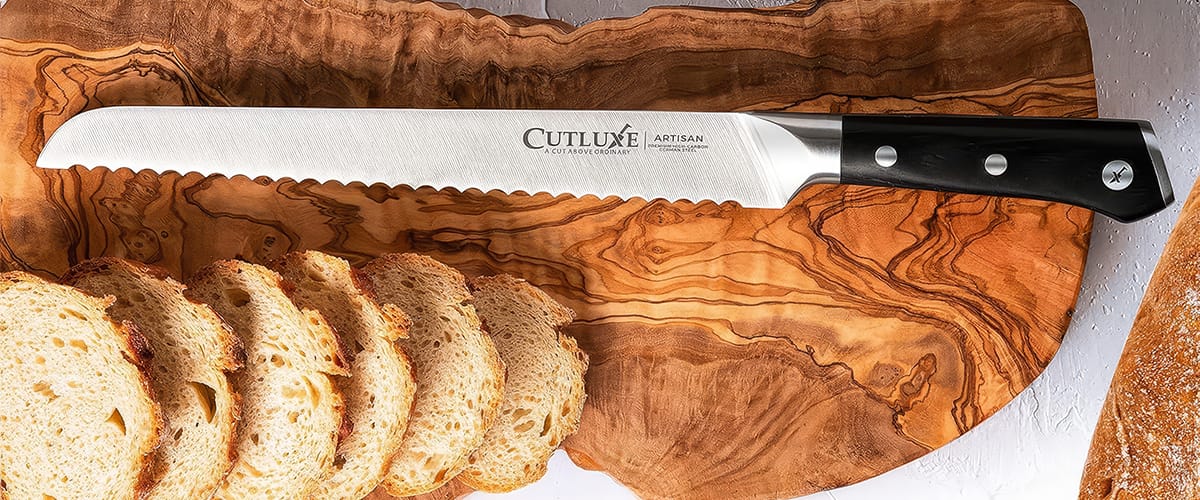
Selecting the right bread knife can significantly enhance your kitchen experience. Here are key factors to consider:
Essential Features to Look For
- Blade Length: Opt for a 9-inch blade for versatility.
- Serration Pattern: Look for pointed serrations for all-purpose use.
- Blade Material: High-carbon stainless steel offers a good balance of sharpness and durability.
- Handle Comfort: Choose a handle that feels comfortable and secure in your grip.
- Full Tang: A full tang (blade extending through the handle) provides better balance and durability.
Price Range Considerations
Bread knives can vary widely in price, typically ranging from $20 to $200+. Here’s a general breakdown:
- Budget ($20-$50): Suitable for occasional use, but may lack durability.
- Mid-range ($50-$100): Good quality for regular home use, balancing performance and value.
- High-end ($100+): Professional-grade knives with superior materials and craftsmanship.
For most home cooks, a mid-range bread knife offers the best balance of quality and affordability.
Top Brands in the Market
Several reputable brands offer excellent bread knives. Some top choices include:
- Wüsthof: Known for their Classic 9-Inch Double Serrated Bread Knife
- Victorinox: Offers the popular Fibrox Pro Bread Knife
- Shun: Produces high-end options like the Classic 9-Inch Bread Knife
- Global: Their G-9 Bread Knife is a favorite among professionals
Proper Bread Knife Techniques
Mastering the use of a bread knife can elevate your culinary skills and ensure you get the most out of this versatile tool.
Basic Slicing Method
- Position the Bread: Place the loaf on a cutting board, holding it steady with your non-dominant hand.
- Start at the Top: Begin your cut at the top of the loaf, using the tip of the knife to initiate the slice.
- Use a Sawing Motion: Draw the knife back and forth in a gentle sawing motion, letting the serrations do the work.
- Apply Minimal Pressure: Allow the weight of the knife and the serrations to cut through the bread, avoiding excessive downward force.
- Complete the Slice: Continue the sawing motion until you’ve cut completely through the loaf.
Grip and Positioning
- Hold the handle with your dominant hand, using a firm but relaxed grip.
- Position your other hand on top of the loaf, keeping fingers well away from the blade.
- For larger loaves, you may need to stand to get better leverage and control.
Common Mistakes to Avoid
- Applying Too Much Pressure: This can crush soft breads or cause uneven slices.
- Using a Dull Knife: A sharp bread knife requires less force and produces cleaner cuts.
- Cutting on an Unstable Surface: Ensure your cutting board is stable to prevent accidents.
- Rushing the Process: Take your time to achieve even, clean slices.
Professional Tips and Tricks
To elevate your bread knife skills, consider these expert techniques and recommendations:
- Reverse Grip for Precision: For very thin slices, try holding the knife with the serrated edge facing upwards. This can provide more control for delicate cuts.
- Slice Bread When Cool: For the cleanest cuts, allow freshly baked bread to cool completely before slicing.
- Use the Entire Length: Utilize the full length of the blade for smooth, efficient cuts. This reduces the number of strokes needed and results in cleaner slices.
- Flip Large Loaves: When cutting large, round loaves, make a cut halfway through, then flip the loaf and complete the cut from the other side for even slices.
- Slice Bagels Safely: To slice bagels, place them flat on the cutting board and hold with a kitchen towel for added grip and safety.
- Warm Knife for Cakes: For cleaner cuts on frosted cakes, warm the blade slightly by dipping it in hot water and wiping dry before each slice.
- Use for Tomatoes: A sharp bread knife is excellent for slicing ripe tomatoes without crushing them.
- Leveling Cake Layers: Use the long, even blade to level cake layers for professional-looking results.
“When using a bread knife, let the knife do the work. Use a gentle sawing motion and avoid applying downward pressure. This will result in even slices and preserve the texture of your bread.” – Professional chef Thomas Keller
FAQs
Can bread knives be sharpened?
Yes, bread knives can be sharpened, but it’s a more complex process than sharpening straight-edged knives. Each serration needs to be sharpened individually, which is often best left to professionals. Some electric sharpeners have settings for serrated knives, but these should be used with caution to avoid damaging the blade.
What’s the ideal length for home use?
For most home kitchens, a 9-inch bread knife is ideal. This length provides enough blade to handle most loaves while still being manageable for smaller tasks. However, if you frequently work with very large artisanal loaves, you might prefer a 10-inch blade.
Can it be used for other foods?
Absolutely! While designed primarily for bread, these knives are versatile tools. They excel at cutting soft fruits like tomatoes and peaches, slicing cakes and pastries, and even tackling foods with waxy exteriors like pineapples.
Electric vs. manual bread knives: Which is better?
While electric bread knives can be convenient, especially for those with limited hand strength, manual bread knives generally offer more control and versatility. They’re also more durable, require no power source, and are easier to maintain. For most home cooks, a high-quality manual bread knife is the better choice.
What is a double serrated bread knife?
A double serrated bread knife features two levels of serrations: larger scallops with smaller serrations within them. This design aims to provide smoother, more precise cuts by reducing friction and creating cleaner slices. Double serrated knives are particularly effective on crusty breads and delicate pastries, offering enhanced performance over traditional single serrated blades.
What is the difference between a serrated utility knife and a bread knife?
The main differences between a serrated utility knife and a bread knife are:
- Size: Bread knives are typically longer (8-10 inches) while utility knives are shorter (4-7 inches).
- Blade Width: Bread knives have wider blades; utility knives are narrower.
- Intended Use: Bread knives are specialized for large loaves; utility knives are more versatile for smaller tasks.
While both have serrated edges, a bread knife is optimized for slicing bread, while a serrated utility knife is designed for a broader range of small to medium cutting tasks.
Conclusion
Understanding what a bread knife is goes beyond recognizing its serrated edge. It’s about appreciating a tool designed to handle a specific yet crucial task in the kitchen. From its unique design to its varied applications, a bread knife is an indispensable asset for anyone who takes their culinary endeavors seriously. By choosing the right knife, mastering proper techniques, and maintaining it well, you can ensure that every slice – whether of a crusty sourdough or a delicate pastry – is a cut above the rest.
